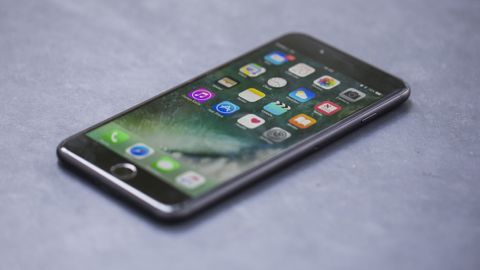Why you can trust TechRadar
- Excellent point-and-shoot dual cameras
- Much improved low-light performance
- Depth-of-field feature coming later this year
The iPhone 7 Plus camera is one of the major new features on the handset, and it's the first iPhone to boast two rear-facing snappers – the smaller iPhone 7 is still stuck with a single lens.
Take a look at the back of the 7 Plus and the large camera bulge is home to two 12MP cameras, one of which is a wide-angle lens while the other is a telephoto lens. In short, switching from wide-angle to telephoto gives you a 2x optical zoom, which means you don't lose image quality while getting closer to your subject.
Optical zoom is something smartphones have always struggled with, and usually you just have a digital zoom at your disposal, which reduces the quality of your shots the closer in you get. You can still digital-zoom (up to 10x) on the 7 Plus if the 2x optical option isn't enough – but it's good to see Apple taking a positive step forward here.
Apple isn't the first to slap two cameras on the back of a smartphone, with Huawei, LG, Honor and HTC just some of the rival manufacturers who've done something similar in the past – although the implementation has differed between handsets.

In true Apple fashion, the two cameras on the 7 Plus have the same simplicity as previous iPhone iterations, with a simple '1x' or '2x' button above the on-screen shutter button enabling you to jump between the two.
It's not just a second lens that's new on the iPhone 7 Plus either; there's a whole new camera system too, with a larger f/1.8 aperture and six-element lens allowing the cameras to suck in 50% more light than their predecessors.
And it really does work. Low-light performance from the iPhone 7 Plus is much improved over the 6S Plus, and nears the levels we've seen from the Galaxy S7 and S7 Edge. Though of course all of these phones have since been topped by newer handsets such as the Huawei Mate 20 Pro.
Compare your shots with any taken on an iPhone 6 Plus or 6S Plus and you'll also note the improved color reproduction, thanks to the 7 Plus sporting wider color capture for more vibrant shots.
They're still not quite as punchy as the shots you get from a top Samsung phone, but the improvement over its predecessors is again noticeable, and it's yet another feather in the cap of Apple's all-new camera system.

The camera app itself is just as easy to use, with no overcomplicated settings: just point, and shoot. HDR is set to auto by default, and generally does a good job of brightening up darker areas of your shots – although it can overexpose already bright areas at times.
While rival manufacturers try and stuff a whole host of modes and features into their camera apps, Apple continues to shy away from things like Pro mode, giving you just six options: photo, square, pano, video, slo-mo and time-lapse.
For everyday users it makes the app far less daunting – but those who like tinkering with the likes of exposure, shutter speed and white balance might want to take a look at the current crop of Android flagships.
Live photos are present again here, which sees the iPhone 7 Plus capture a couple of seconds of video with each photo you snap, bringing them briefly to life – and these moving images are supported by the likes of Facebook and Instagram if you fancy sharing them with friends.

The true potential of the dual-cameras wasn't fully realized at launch, as they were still working independently of each other. That changed later, as Apple rolled out a software update to unlock its depth-of-field feature.
This sees the two 12MP snappers work in unison to produce what Apple claims are DSLR-quality images.
The update allows the dual cameras to produce a bokeh effect, creating an attractive background blur around your in-focus subject.


